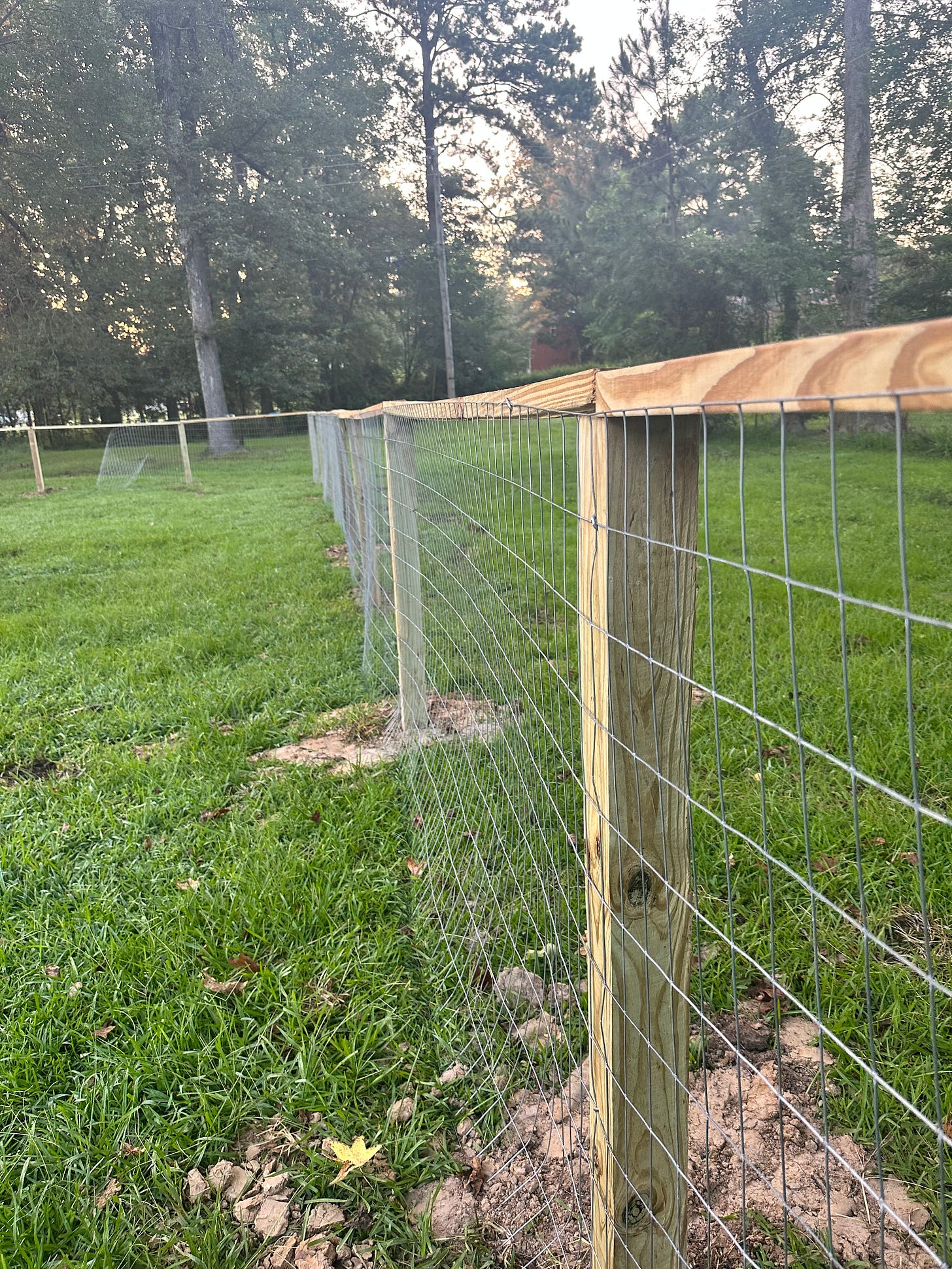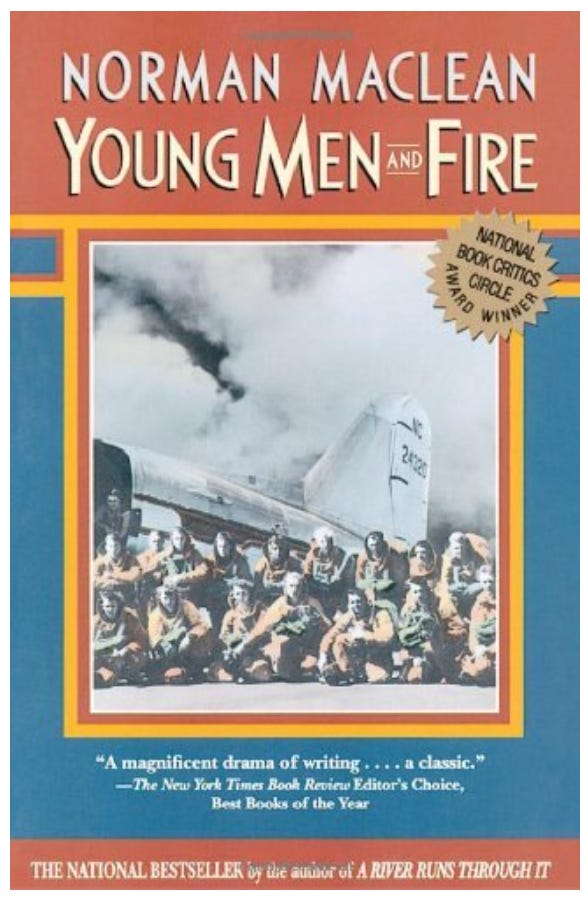On Fences and Broken Water Lines
I think every place we have moved in the past 8 years, I have built a fence. I don’t know why Cait chooses houses without fences, but we have dogs that will roam if they aren’t contained by the simplest of barriers. As Robert Frost wrote, “Good fences make good neighbors”. So after we closed on our house this past Friday, I immediately began constructing the fence it didn’t have. With only the help of my father-in-law and a good friend of mine, I slowly cooked myself in the scorching Texas sun as we set fence posts, hammered top rails, and stretched welded wire to its breaking point.
I knew it took a bad turn when I punched a hole in the earth with the auger, only to see water come flowing out. Reaching into the flowing brown water, I could feel the remnants of a 1” pipe in the cool flowing chasm I created. My ignorance had severed our new house’s main water line.
I cut off the water and then went to the house to cut power to the hot water heater. In my mind, I began to formulate a plan to fix the broken pipe and get back to building the fence. I needed a water access point for the garden. This gave me the prime opportunity to put a water spigot in the middle of it.
Then a deeper thought hit me, I wasn’t panicked by it at all. As a younger man, I would have completely freaked out. “How much is this going to cost? How do I fix this?” would have repeatedly gone through my mind. Now, it had become more of an eye-rolling hassle than anything. I had matured.
Yet, that wasn’t the cool part. The most interesting part of the whole experience is how I instinctively took an unanticipated problem and turned it into an advantage. A broken water main became an easy way to access water for my garden. That kind of roll-with-the-punches mentality takes time, effort, and a whole lot of tragedy to master.
Everything is serendipitous when viewed through the right lens.
Preparing
I’ve paused all training for the move. I’m stuck between closing on our house and needing to build a fence for Cait while also working and getting ready for the backcountry scouting event I’m leading in Washington. At the end of the day, something has to give; this time, it was my physical training.
Knowing that I can push myself that hard for that long is good. We moved everything we needed to on Friday evening, then worked on the fence for the next two days straight. All that is left now is stretching wire and nailing it to posts.
Ultimately, this is what I train for anyhow, to be able to be there when my family needs it. Fitness is essential for hunting and leadership, and it is an excellent hobby to have, but where it is not negotiable is where I need to be able to show up physically for those that matter most, my wife and daughter. I’m glad I had the sense to temper my body so I could push through 100 degree Texas heat and get the fence done before I leave.
Learning
This week I stumbled upon an old man named Russel Ackoff. He started his career as an architect before being drafted into the Army for service in WW2. After returning, he became a business consultant that changed the world of management science by advocating systems thinking.
In a talk to the US Navy, Ackoff explained systems thinking in the most straightforward, down-to-earth way I have ever heard. He told a parable of a foreigner being shown an orange for the first time. The orange is cut in half, exposing a center line of white rind. Then another person, upset that the orange was cut incorrectly, cuts another orange and shows it to him. This time, the various internal slices are exposed by the horizontal cut. Still another peels the orange and lays out the sphere of slices for inspection.
The lesson was this: To fully understand a problem set, you need to look at it from multiple perspectives. Ackoff goes on to tell anecdotes of millions of dollars saved by simple fixes discovered by asking everyone involved. Typically, the most innovative solutions came from the most unlikely people.
It reminded me of how Norm Maclean investigated the Mann Gulch Fire. If you take the time to read through Young Men and Fire you will quickly realize that Maclean is slicing the orange in every way possible to understand what happened and how only one man survived.
Maclean looks at the fire from the science perspective, from the pilots involved to the people that merely observed it from afar and finally, from the lone survivor. He uncovers that the way you survive a forest fire is by lighting the fuel at your feet, creating an unburnable circle around you. Simple and genius.
From now on, I will slice the orange in a way that will make Ackoff and Maclean proud. Asking everyone involved their perspective and putting those perspectives together like a puzzle. With that, I will be able to understand what is going on around me and find those simple solutions to big problems.
Growing
I was invited to breakfast this week by a bunch of old men I hadn’t seen in years. It was interesting to see them now as peers for the first time. They are more mature than me and the last time I saw them was in my youth, 18 years ago.
They were still meeting regularly, sharing life and laughing at one another. I left with requests for prayers for dying parents and offers of blueberries for my garden. It was simple, yet beautiful in its own way.
Juxtapose that with moving into our new house and having to rapidly build a fence before I head off on my next trip. Only two people showed up to help, and they are greatly appreciated. However, there are tons of people I talk to on a regular basis who were too busy.
It made me think about friendship and the time invested in relationships. Who do I want to be around when I’m old? Who am I neglecting to invest in now, but should be? Who have I invested in today that is simply never going to be there when I truly need help? Those questions pose complicated waters to navigate.

Subscribe to Hone the Edge
Weekly Chautauquas on Self Improvement










Way to be a problem solver!
Excellent article! Thanks for putting this reminder out.